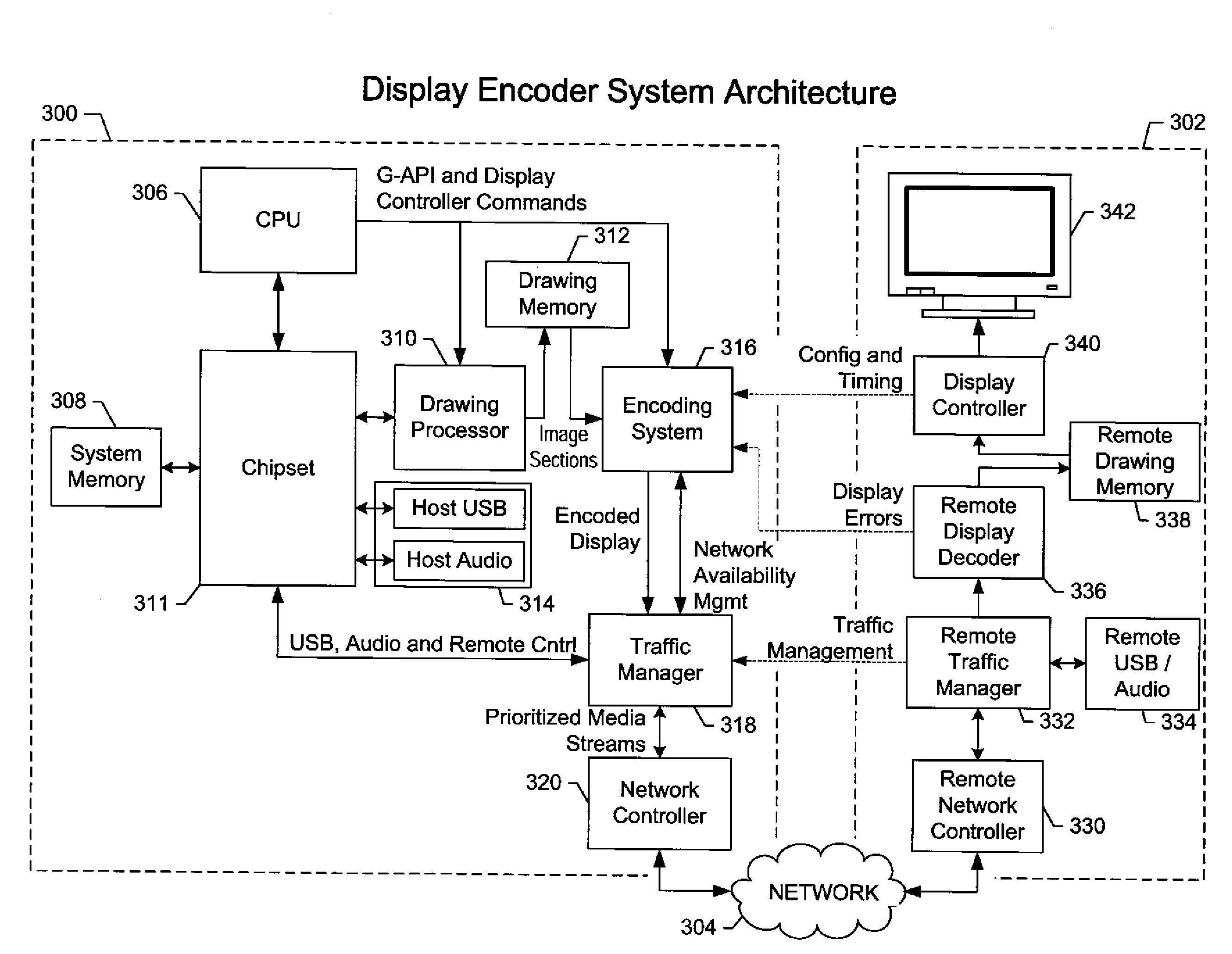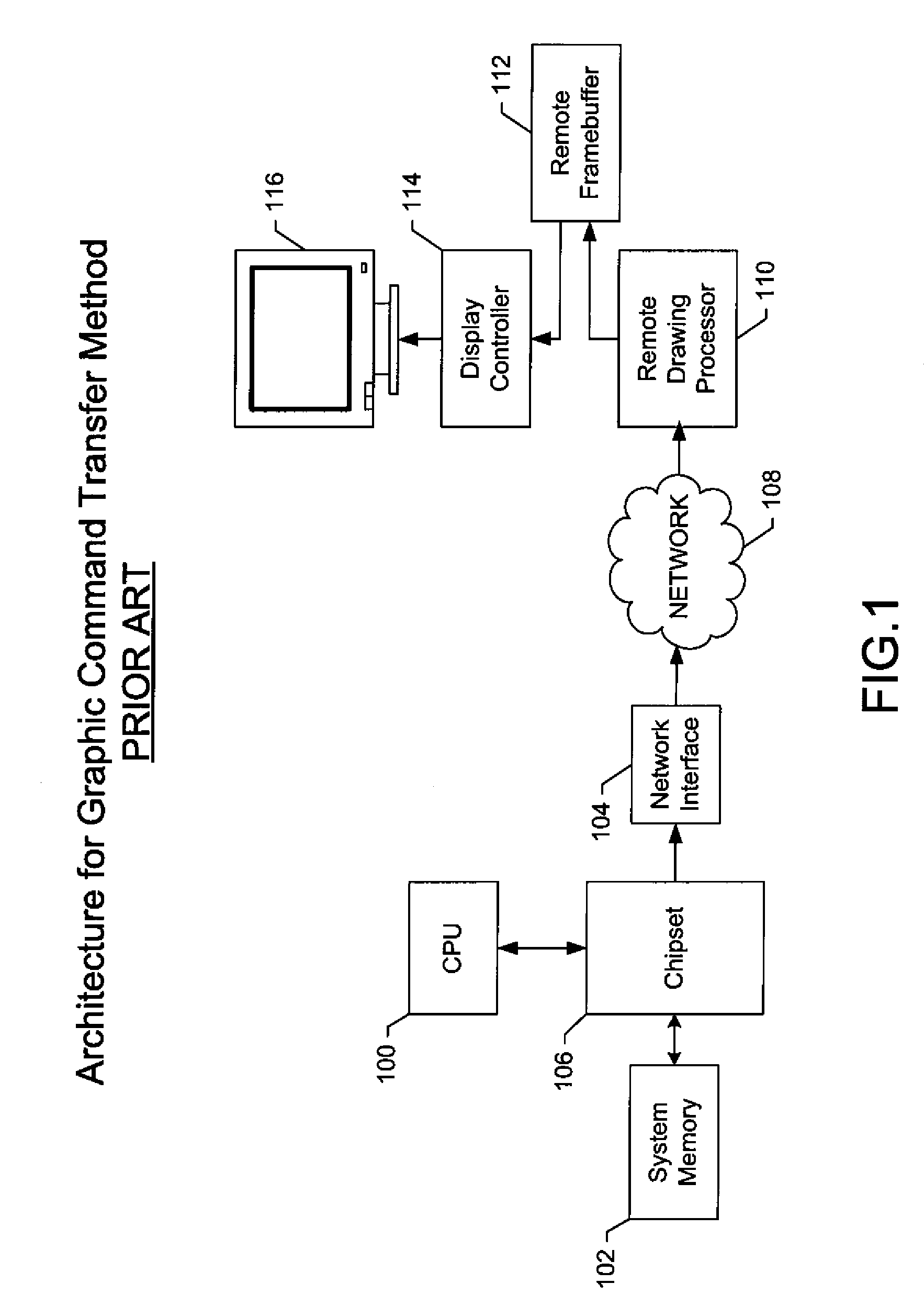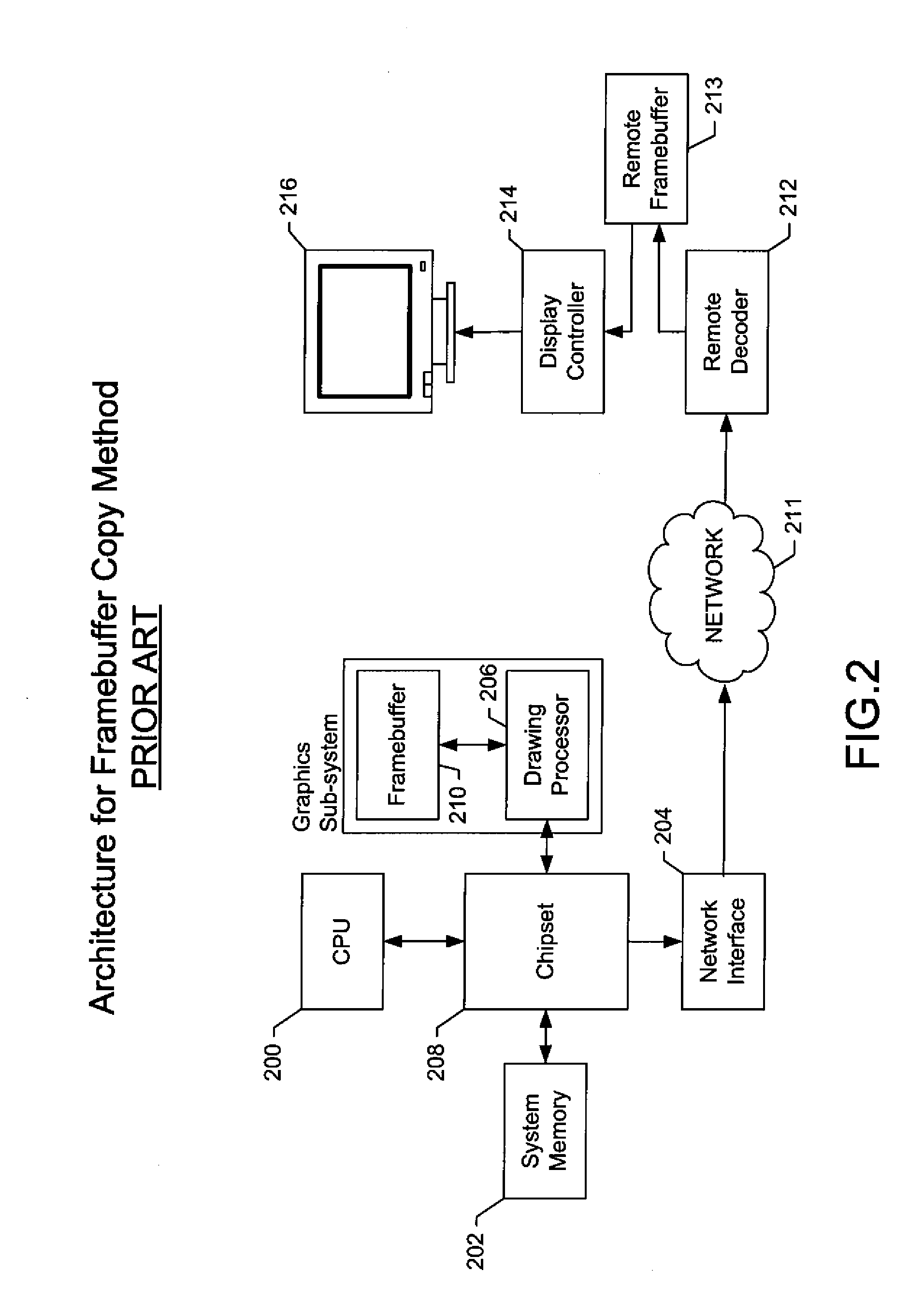Methods and apparatus for interfacing a drawing memory with a remote display controller
a technology of drawing memory and display controller, which is applied in the direction of data conversion, transmission, instruments, etc., can solve the problems of system graphics capabilities being constrained by low-complexity graphics capabilities, increasing the number of commands, and maximizing image quality. , the effect of reducing data and quality
- Summary
- Abstract
- Description
- Claims
- Application Information
AI Technical Summary
Benefits of technology
Problems solved by technology
Method used
Image
Examples
Embodiment Construction
[0047]FIG. 3 provides a system view of the present invention. The architecture enables the encoding, aggregation and transmission of display, and peripheral data such as audio and USB streams between a data processing system and a remote user interface. Host system 300 is connected to remote system 302 by network 304. Host system 300 is comprised of CPU 306 connected to system memory 308 and drawing processor 310 by chipset 311. Drawing processor 310 is connected to drawing memory 312 that incorporates at least one frame buffer. Host system 300 also includes other peripherals. In the preferred embodiment, peripheral controllers such as host USB and audio controllers 314 are connected to CPU 306 via chipset 311. In alternative embodiments, these functions may be implemented in software on CPU 306 or embedded in other host sub-systems, including chipset 311 or encoding system 316.
[0048]Encoding system 316 is connected to drawing memory 312 so that it can read and encode sections of th...
PUM
 Login to View More
Login to View More Abstract
Description
Claims
Application Information
 Login to View More
Login to View More - R&D
- Intellectual Property
- Life Sciences
- Materials
- Tech Scout
- Unparalleled Data Quality
- Higher Quality Content
- 60% Fewer Hallucinations
Browse by: Latest US Patents, China's latest patents, Technical Efficacy Thesaurus, Application Domain, Technology Topic, Popular Technical Reports.
© 2025 PatSnap. All rights reserved.Legal|Privacy policy|Modern Slavery Act Transparency Statement|Sitemap|About US| Contact US: help@patsnap.com



